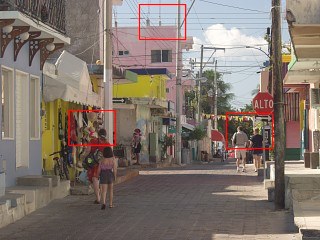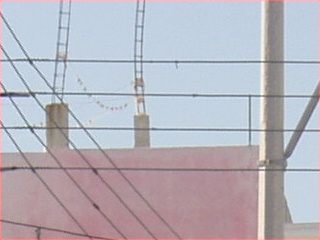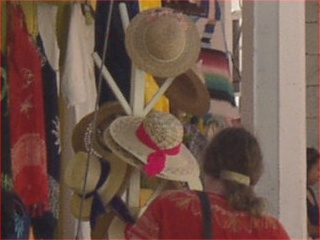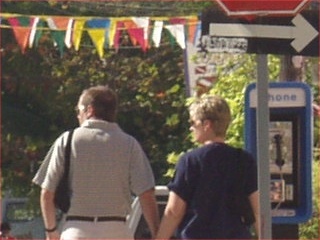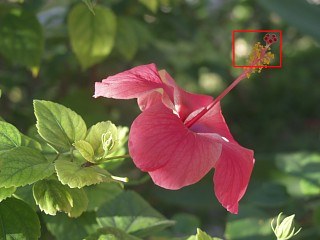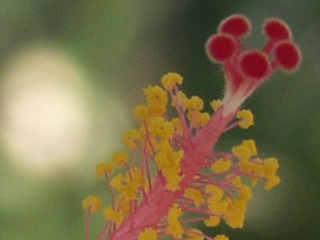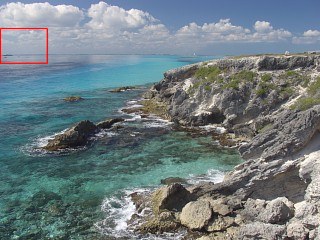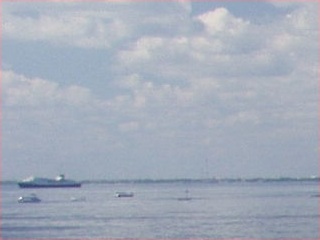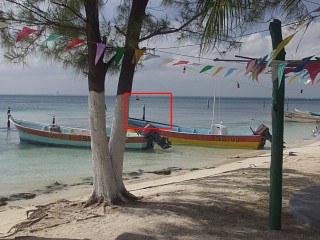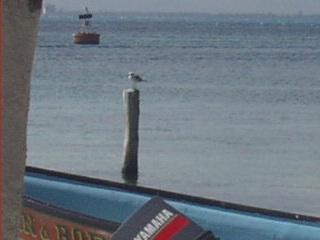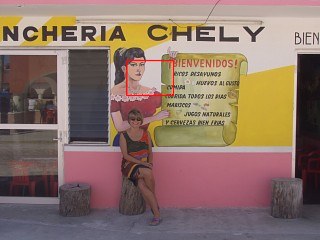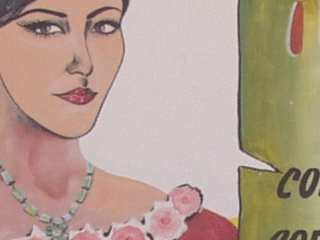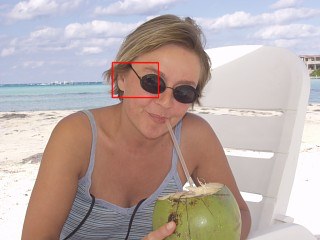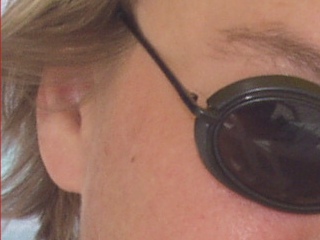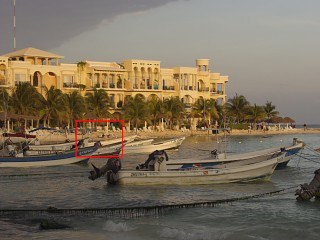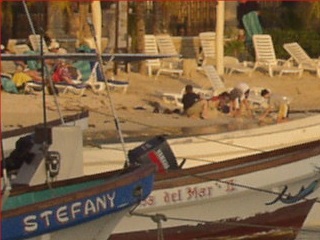|
Sunny day conditions
|
|
The pictures at the left are full frames, reduced to 320x240 pixels and resharpened. They are included to show the location and relative size of the 1:1 samples, which are shown at the right.
The 320x240 samples are fragments of unmanipulated originals — just cropped and re-saved at a very low JPEG compression, so that they can be representative as to the "original" image quality.
The samples show detail larger than it will be printed. For 8x10" prints, the sample height will correspond to 1.14" (29 mm) on paper, while for 11x14" ones — to 1.57" (40 mm).
The E-10 allows to set the sharpness and contrast attributes of images, more exactly of the process in which the "raw" CCD data (30 bits per pixel) is translated into the stored image (24 bits per pixel). For most uses I prefer to keep contrast at "Low" and sharpness at "Soft". This usually does not look (straight off the camera, that is) as good as the "Normal" settings, but protects the image from excessive sharpening artefacts and from loss of detail in shadows and highlights. During the postprocessing in an image-editing program I apply as much sharpening and contrast as a given image needs - this is much safer.
Most of samples in this page were taken (and are shown) in the Low/Soft settings. The first two, however, are also shown in Normal/Normal, just to illustrate the difference.
|
|
|
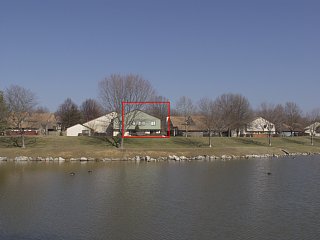
|
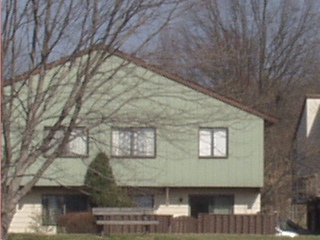
|
|
EFL = 35mm, program mode with -0.3EV exposure compensation (1/640s, F/6.3), compression 1:4. Contrast set to "Low", sharpness to "Soft".
|
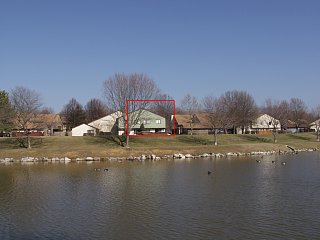
|
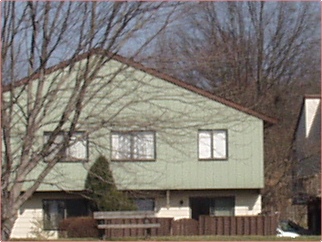
|
|
Same as above, but contrast and sharpness at "Normal".
|
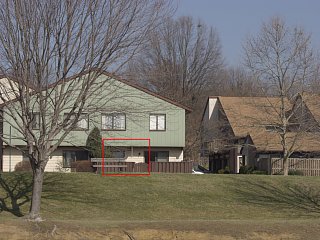
|
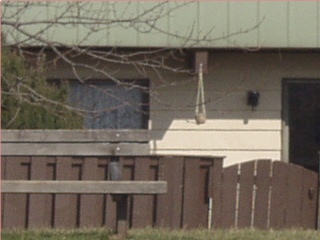
|
|
EFL = 140mm, program mode with -0.3EV exposure compensation (1/640s, F/6.3), compression 1:4. Contrast set to "Low", sharpness to "Soft".
|
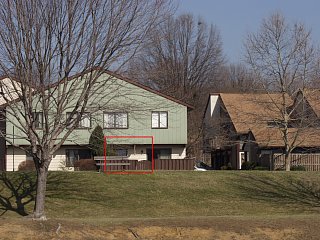
|
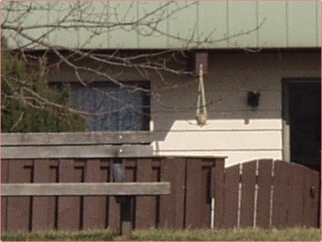
|
|
Same as above, but contrast and sharpness at "Normal".
|
|
Comparisons between various cameras, quite popular at digital photography sites, require some caution. It is difficult to compare without knowing how much in-camera processing has been applied to images. The pictures more heavily adjusted may look better in comparison (see the last sample), but will not gracefully submit to as much postprocessing afterwards.
|
|
Indoors and low light
|
|
Now, few more examples, taken under varying conditions, just to give you some idea...
|
|
|
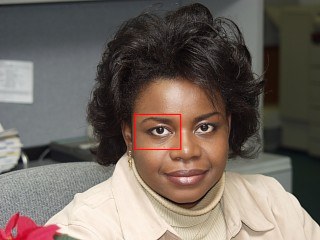
|
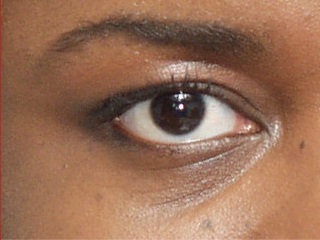
|
|
Shot with the FL-40 flash (bounced plus fill) at full auto;
2240x1680, compression 1:2.7.
|
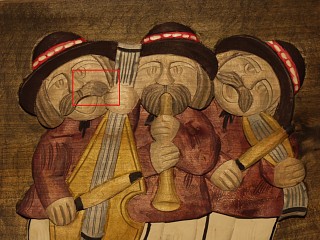
|
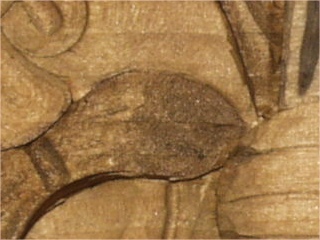
|
|
Zoom at 140 mm, 1/60s at F/8.0. FL-40 with the LumiQuest ProMax diffuser.
|
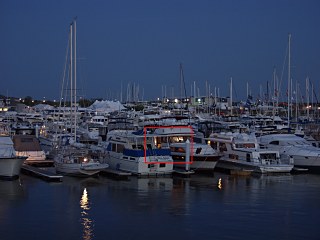
|
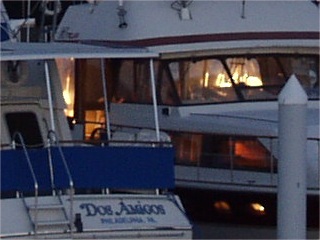
|
|
Half hour after sunset: EFL=80 mm; 1/4s at F/2.2, -1EV; compression 1:8
|
|
Vacation snapshots
|
|
Here are some more images taken in January, 2001 on Isla Mujeres, Mexico.
All these pictures were shot in program or aperture priority mode, handheld, UV filter; full pixel size and high (1:8) JPEG compression. The one with a coconut uses the built-in flash for fill.
Again, the images were not modified, except for slight resharpening of the reduced version (note that three samples were taken from the first frame).
I am impressed with the lens performance (very sharp — even in the corners, no visible chromatic aberration, free of flare), as well as with the way in which the E-10 handles exposure.
|
|
Remember that the mild colors and relatively low contrast are due to the camera settings as stated above.
To see the same images after they were touched up with an image processing program (mostly just some tonal enhancement), see my Isla Mujeres Gallery Page.
See also my E-20 image samples.
|
Camedia® and Olympus® are registered trademarks of Olympus Corporation.
This page is not sponsored or endorsed by Olympus (or anyone else)
and presents solely the views of the author.
|
















